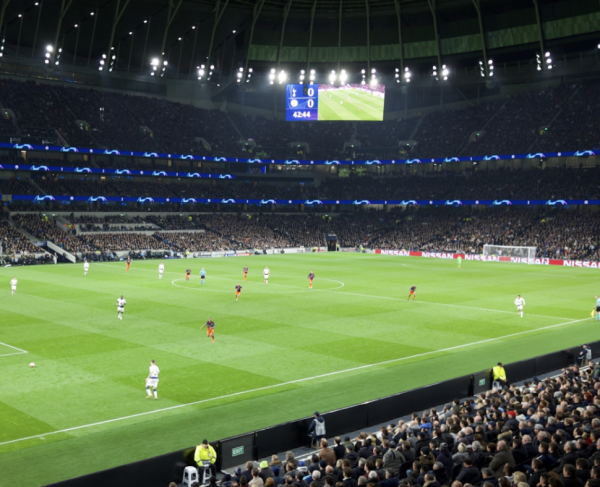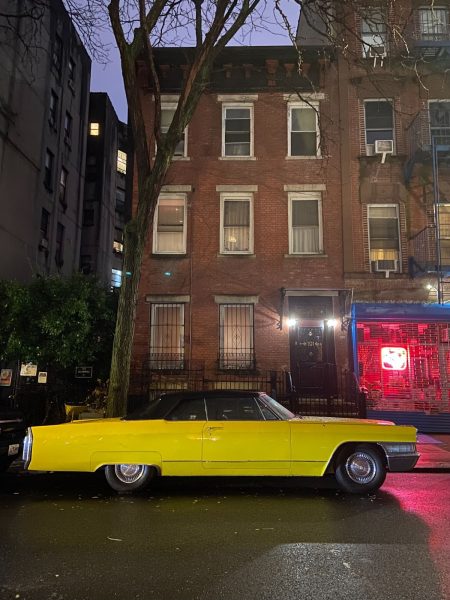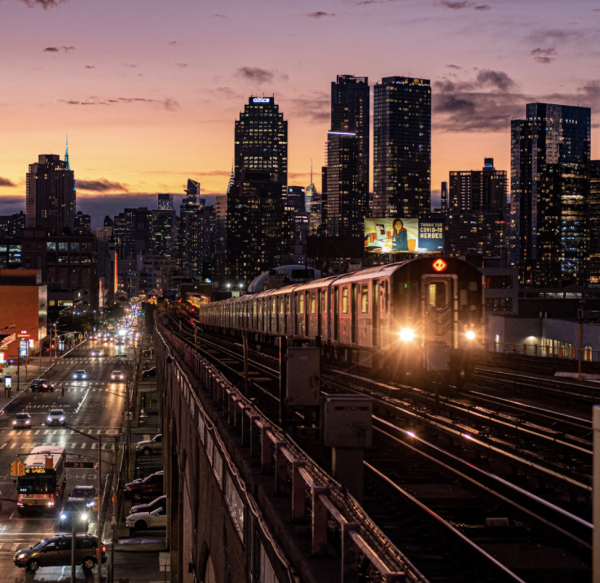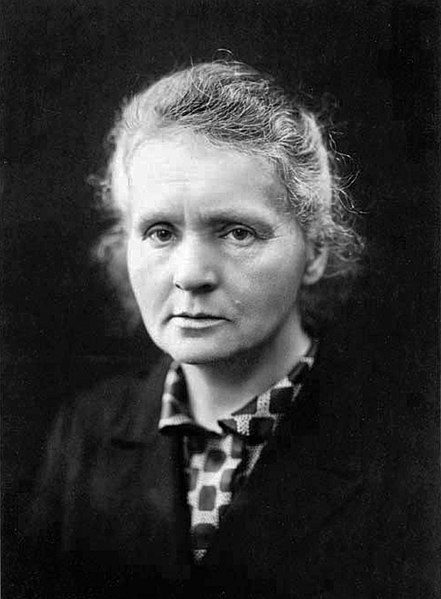New York’s New Look: The Evolution of Modernist Architecture
An exploration of the fascinating history and the resurgence of modernist architecture in and around New York City.
As a result of the recent building boom in New York City, modernist architecture has been on the rise. With the new, sleek high-rises popping up throughout the city, many residents find themselves asking, “Where did it all come from?”
In a metropolis like New York City, only one thing is certain — change. Over the city’s 400-year history, the architectural landscape has shifted dramatically. From grand yet simplistic neoclassical works to the exuberant art deco movement, the facades that makeup America’s largest city are incredibly diverse.
As most New Yorkers may have noticed, construction is on the rise. In fact, the city is currently in the middle of one of the largest building booms in the last fifty years, with approximately 90,000 additional housing units expected to be built by 2026. While the size of this growth is unquestionably enormous, this sudden rise in construction is not entirely unprecedented in a city of 8 million people. Despite the somewhat redundant nature of construction in a city as large as New York City, this housing boom does have one unique quality – its ‘modernist twist.’
‘Modernist twist’ refers to the massive spike in modernist buildings in and around the city. These ultra-modern buildings, characterized by rigorous geometric lines, flat planes, minimalist design, and incredible use of glass, have undoubtedly begun to permeate the iconic New York City landscape.
“I think what we have started and will continue to see is the resurgence of modernism as well as an increased appreciation for the style,” said Brent Leonard, principal design director and founding partner of FormArch, a Manhattan-based architecture and design firm that draws inspiration from the “modernist sensibility.”
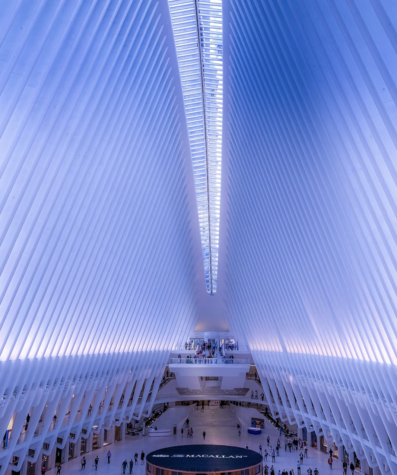
(Andreas M / Unsplash )
With this recent uptick in modernism throughout the city, many residents find themselves asking the same question, where did all this come from?
The modernist architectural sensibility we are familiar with today began to emerge in the aftermath of World War I, primarily due to the Bauhaus movement. This style, renowned as the touchstone of most modern architecture, originates from the influential German school founded by Walter Gropius, a prolific German architect, in 1919. Bauhaus, which directly translates to “house of building,” originated intending to radically transform architecture and rebuild areas that had been decimated over the four grueling years of war. As a result, the style spread quickly throughout Europe and became one of the main styles used to rebuild towns and cities along the Western Front ravaged by the war.
In 1933, the Bauhaus School, which had originally been established in Weimar, Germany, and then moved to the capital, Berlin, was forced to shut down by the Nazis. They claimed the style was part of a communist agenda to erode traditional German culture. Bauhaus was also deemed unacceptable by the Nazi regime because two of its most prominent proponents, architects László Moholy-Nagy and Marcel Breuer, were Jewish. While the centralized institutions of the Bauhaus movement were systematically removed, the ideas had already caught on.
Shortly after the rise of the Nazi regime, immigrants from all over Western Europe fled to the United States, wary of the impending conflict. Among those fleeing persecution were architects and artists well-versed in the Bauhaus sensibility. These architects, many of Jewish descent, took inspiration from the classic American high-prairie home. Through the fusion of these two influential styles, the Mid Century-Modern style was born.
Mid-Century modern architecture is not just a blanket term that refers to anything built in the middle of the 1900s but a distinct architectural style that rose to prominence between 1945 and 1969. This unique style, like its offspring, contemporary modernism, is defined by its rigorous geometric lines, flat planes, minimalist design, and use of glass.
Despite these design choices that made the style stand out, what set Mid-Century Modernism apart from other styles during the 20th century was its distinct emphasis on nature. This is primarily due to the involvement of the American high-prairie style, which aimed to reflect and pay homage to the environment. “The emphasis on creating a harmony between the indoors and outdoors contributes a lot to the overall feel of modernist spaces. That connection is really appealing, and I think has a lot to do with the popularity of modernism,” said Leonard.
Post-World War II, a significant emphasis was placed on the quality of living, more specifically, a lifestyle that emphasized communal and familial closeness as well as embracing the outdoors. Through Mid-Century Modernism, the first open-concept architecture emerges, reflecting the desire of the people. America and countries worldwide were ready for a shift away from more traditional, cramped living spaces after the war.
This sentiment is also reflected by the sudden development of the American suburbs, marking a pivotal moment in modernism’s history. With the expansion of American suburbs, architects were presented with a new, more spacious setting that allowed them to embrace the environmental tenets of modernism. This is why “the more seminal examples of modernism are located in suburban areas,” said Shawn Webb, principal RA (registered architect) and the second founding member of FormArch.
Some early examples of this style can be found in the work of early modernist architects such as Walter Gropius, Marcel Breuer, Albert Frey, and, perhaps most notably, Frank Lloyd Wright. These early visionaries in America are responsible for a multitude of iconic structures throughout the country. Their work inspired countless other architects to abandon the more chaotic and imposing styles of architecture like Art Deco and Neoclassicism in exchange for the more sleek, functional, minimalist style that Mid-Century Modern architecture offered.
During the 1950s, the style experienced its golden age. Many suburbs across the United States were completely overhauled. This rapid growth in popularity was undoubtedly due to the aforementioned shift in lifestyle. However, the execution of this new modernist design would have been impossible without the boom in building technology and mass production of materials that occurred during and after the war. The increased availability and the boom in technology that coincided with the rise of modernism were paramount to the scalability of modernism across Western Europe and the United States.
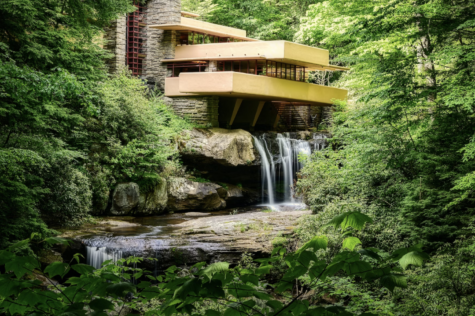
“The style began as less of an aesthetic sensibility and more of a different building sensibility,” said Leonard. Previously, most tall, urban buildings relied upon massive, ponderous stone blocks to act as the primary load-baring entities. However, “the development of a new steel system that was much lighter and could be moved inside buildings… revolutionized the way in which buildings are constructed,” said Webb.
As a result, “the modernist style became more about light, shadow, and more freeform spaces, which are hallmarks of modernism today,” said Leonard. This emphasis on light and shadow can be observed in the implementation of glass “curtain walls” on the outside towers, which are extremely popular among the modern-day skyscrapers that have attracted so much attention in New York City.
Throughout this recent construction boom, the iconic New York City skyline has seen some new, somewhat controversial editions like the aptly named “pencil towers.” The incredibly skinny skyscrapers that seem to push the limits on building height make use of the aforementioned technology to provide unobstructed 360-degree, floor-to-ceiling views of the city. While they may be lovely to live in, many city residents fear the destruction of the iconic New York City skyline and the dilution of the traditional city building styles that give the city its character.
“New York and the East Coast has really lagged behind in their appreciation of modernism because of the strong traditional roots here,” said Webb. Another factor limiting the potential of modernism in the city is the weather, which restricts the possibilities of indoor-outdoor living. Out west, the warmer climate and less traditional culture of architecture contribute to why the best examples of widespread modernism can be found in places like Palm Springs or Los Angeles, both in California.
Despite this, “I think it’s a style that New York really lends itself to. Most of the older office buildings are cramped, dark, and generally unpleasant on the interior. Modernism allows people to experience the city in a completely different way whether they’re in an office or residential building,” said Leonard.
“What is enticing about modernism and why I think we’ve seen a resurgence is because of what it has the potential to provide,” said Leonard. Modernism has also undoubtedly played a large role in public spaces throughout the city, almost all of which have been well-received by the public. Both Webb and Leonard pointed out that this rise in the appreciation of public spaces and the recent increase in the desire to be outdoors all coincide with the rise of modernism in the city.
While the controversy surrounding the rapid re-introduction of modernism remains, it is important to remember that the presence of modernist sensibilities at various points throughout New York City’s history has been the driving factor behind many city landmarks. Iconic buildings like the United Nations Headquarters, the Lever House, the Guggenheim Museum, the Koch Theater in Lincoln Center, and the One World Trade Center are just a few examples of the incredible works of modernism within the city.
Despite the best efforts of modernism’s detractors, the modernist movement has and continues to leave an indelible mark on the city. Increased acceptance of modernism as a sensibility has not only modified the skyline but has also influenced the city’s social fabric. By challenging traditional architectural norms and embracing new technologies, design principles, and materials, modernist architecture is somewhat unique in the way that it has created spaces that support and reflect society’s evolving needs and aspirations.
From its introduction, the avant-garde spirit imbued by modernism is part of what has propelled New York City to the forefront of change in the United States. As New York City has developed, so too has modernism, and this new wave ushered in by the recent building boom only seems to be the next step in the evolution of America’s largest city.
“What is enticing about modernism and why I think we’ve seen a resurgence is because of what it has the potential to provide,” said Brent Leonard, principal design director and founding partner of FormArch, a Manhattan-based architecture and design firm.
Nicholas Anderson is a Managing Editor and Advisory Editor for ‘The Science Survey.' What draws him to journalism is the way that diverse and interesting...


